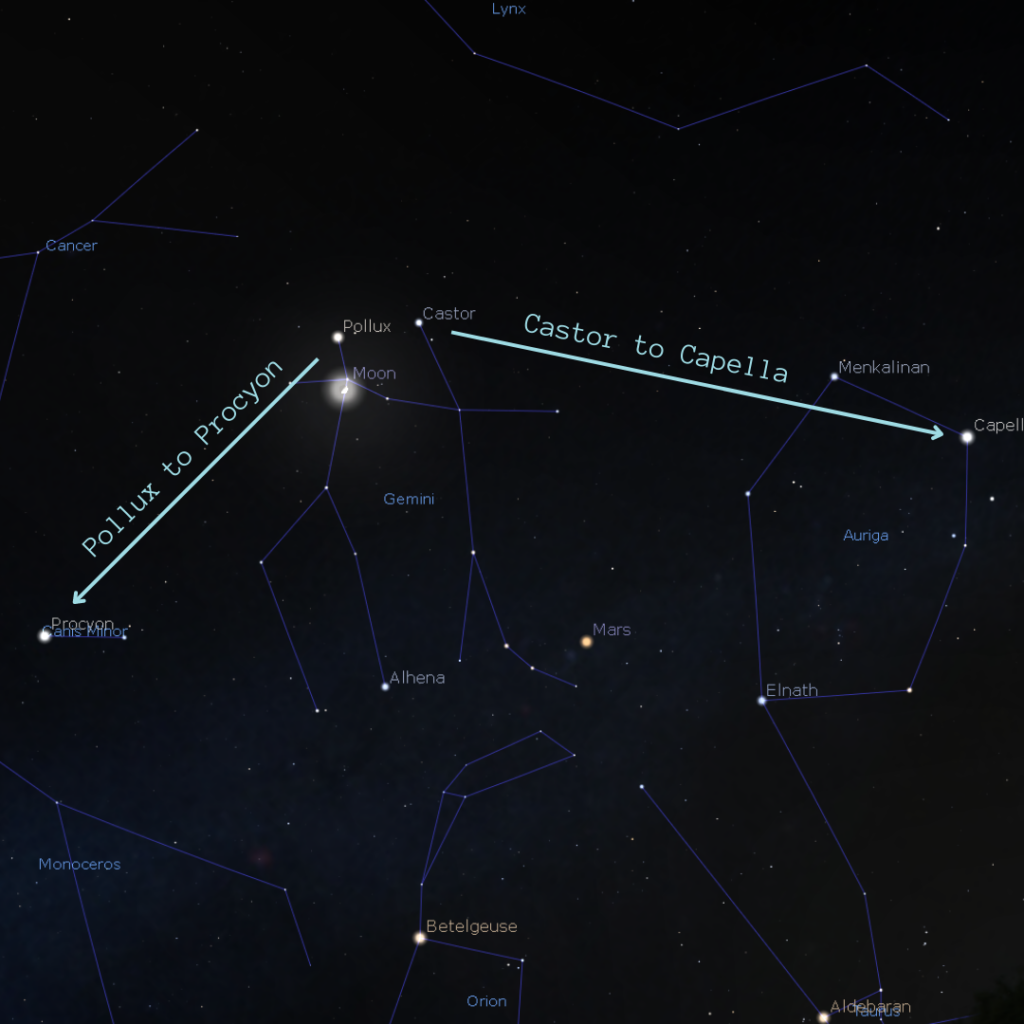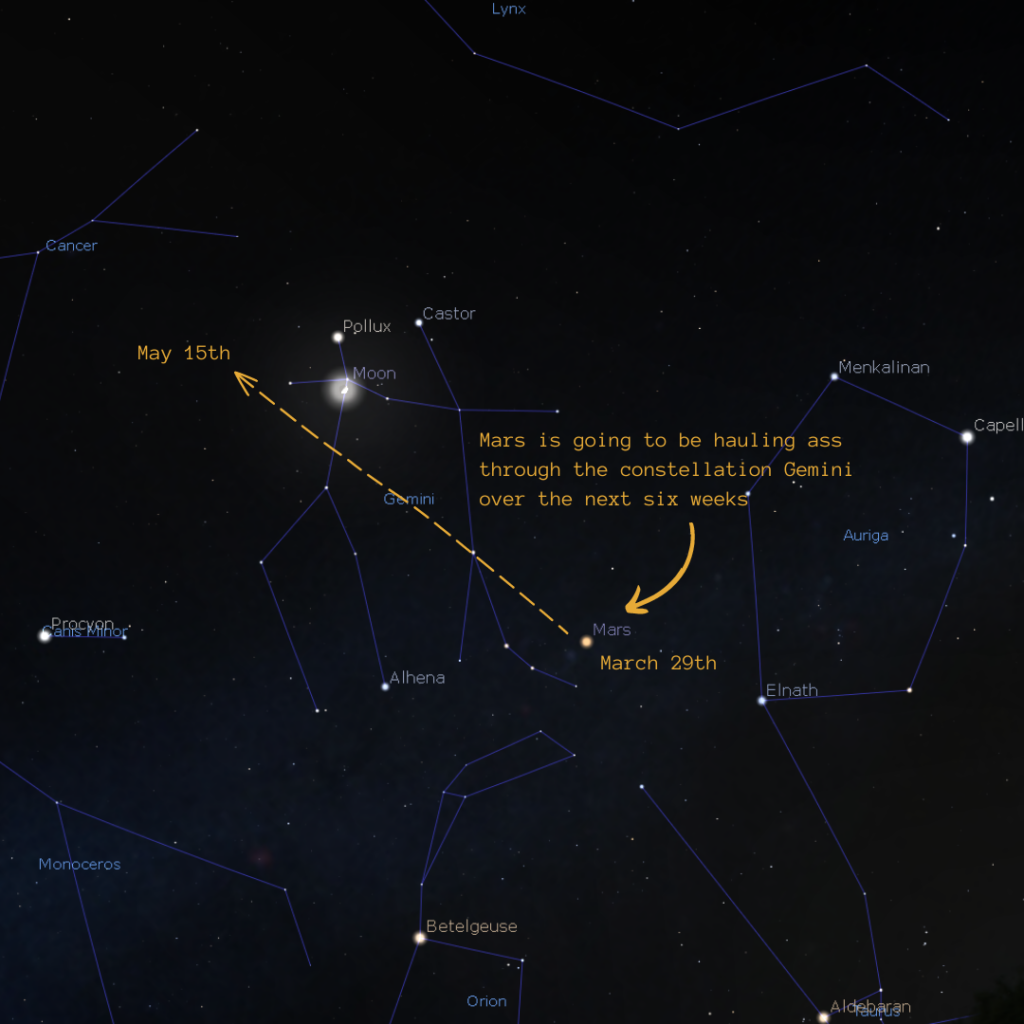Happy Wednesday fellow space-weirdos! It’s time for another stargazing side quest!
For the week of March 29th 2023 (#WUFO week 63) we have an easy target to find: the first quarter Moon near the stars Castor and Pollux of the constellation Gemini.

When you go out at our usual time of 10pm (local), look for a star right above the quarter Moon – that star is called Pollux.
Pollux is the 17th brightest star in the night sky. This star is about twice as massive as our own sun and about thirty times brighter. Pollux is a red giant that’s relatively close to us at 34 light-years away. Pollux was also recently discovered to have an exoplanet that’s about 1.6 times as massive as Jupiter called Beta Genorium b. Pollux is named after the immortal son of Zeus.
Once you find Pollux, look for another star right next to it – that’s Castor, the other marker of the celestial twins. Castor is the 20th brightest star in the night sky. While it appears to be only one star from here on earth, it’s actually six stars! Castor is named after the mortal son of king Tyndareus.
One easy way to remember which of these two stars in Gemini are which is by their proximity to other stars we’ve found in previous side quests. Castor is closer to Capella (week 8) and Pollux is closer to Procyon (week 7).

For a bonus target, check out the bright reddish dot near the bottom of the constellation Gemini. This is Mars! Last time we found Mars (week 42 and 43) it was seemingly stuck in place in the sky week after week. Now Mars is moving much faster through the sky and along the ecliptic. Mars will be making its way all the way through the constellation Gemini over the course of the next six weeks, passing by Pollux around May 8th.

Let us know if you found our stargazing targets for this week! Share your Moon/star/planet pics with us over on Mastodon by tagging @wufo@weirdo.network and Instagram @stargazingsidequest and @liminal.earth. We love to see your weekly celebrations and sky pics!
SOURCES
https://www.space.com/22068-pollux.html
https://www.space.com/21940-castor-star.html
https://science.nasa.gov/gemini-stars-pollux-and-castor



0 Comments